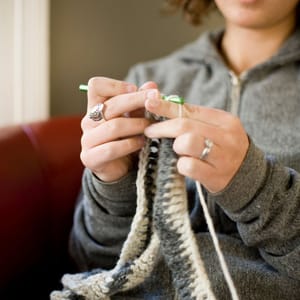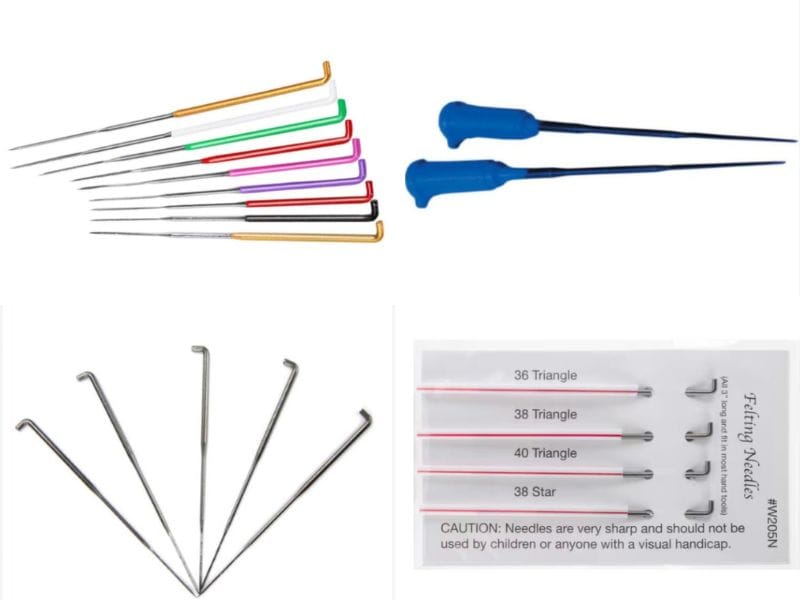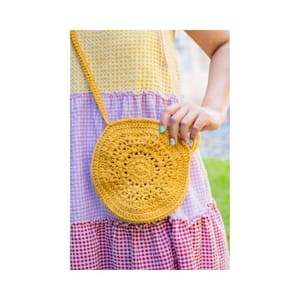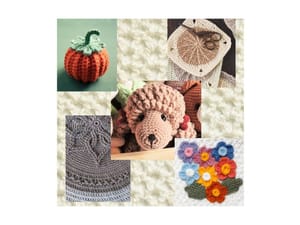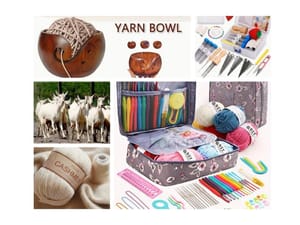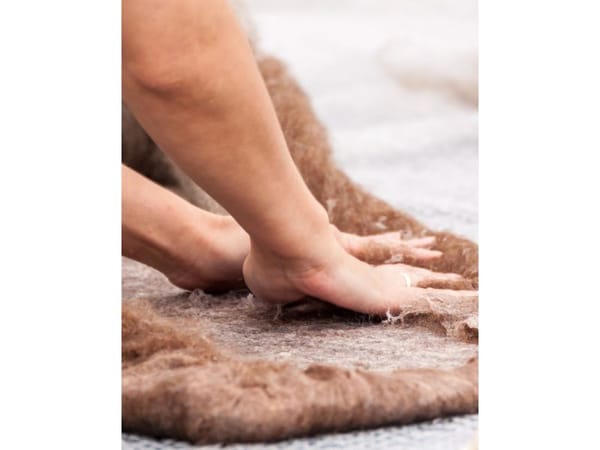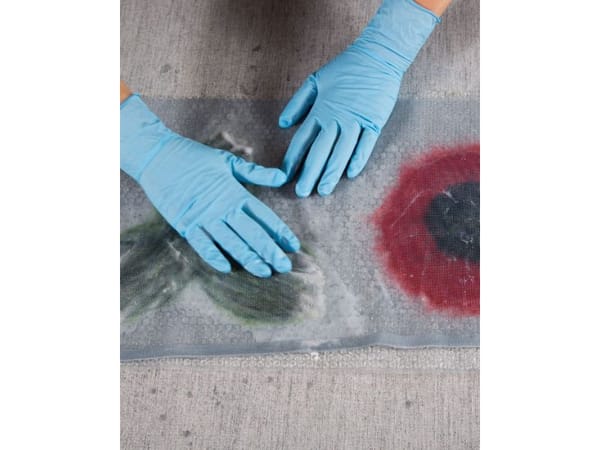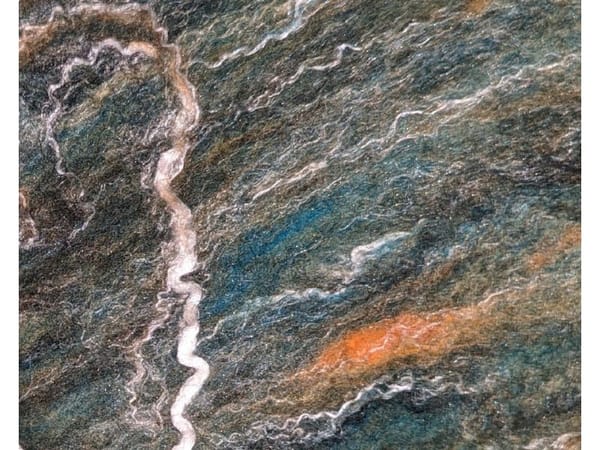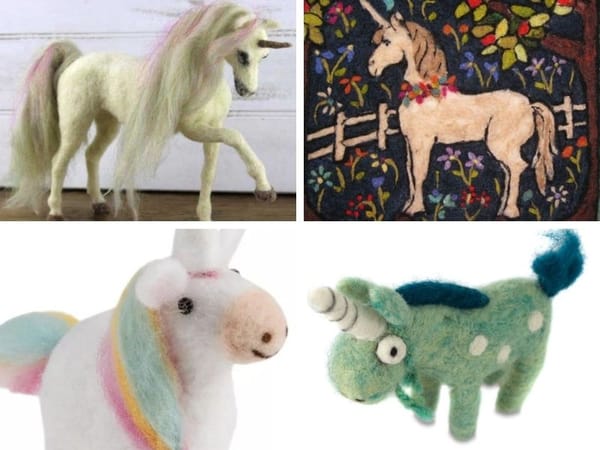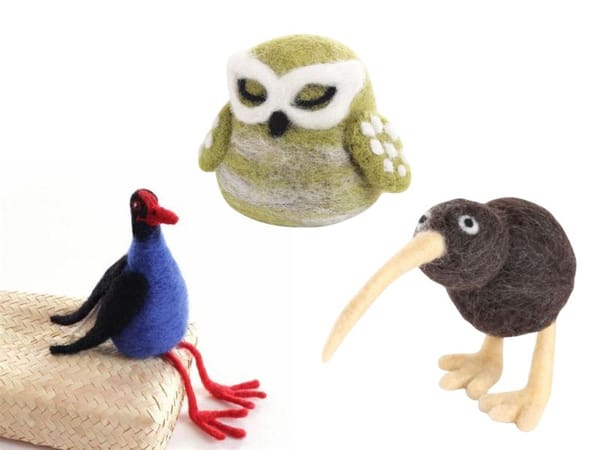Needle felting is a technique that uses wool to create felted sculptures through repeated stabbing with a notched needle.
A craft that Eleanor and David Stanwood started in the 1980s has evolved to become a much-loved hobby.
Using special needles with barbs, the wool fibers tangle together and the artist can sculpt and pad the wool into different shapes including flat felting.
The great thing about needle felting is that it is simple, but the possibilities are endless.
From adorable animals to landscapes, all you need are a few basic tools to get going.
Understanding the tools and techniques used in this art form is key to mastering it. This guide to felting needles will discuss everything you need to know about felting needles so you can make the right decisions and produce exquisite, felted creations.
Read on to find felting needles - the most important tool among your felting supplies!

Key Takeaways
- Felting needles are special needles with barbs that are designed to mat and tangle wool fibers allowing the artist to create densely packed, felted sculptures through repeated stabbing of the wool with the needle.
- Triangular, star, spiral, and reverse felting needles are appropriate for tasks from bulk work to fine detail and unique textures.
- Correct care of felting needles is important to preserve their usefulness for needle felting projects, for example, a felting needle should be used in a straight motion and stored in a dry place.

Your Quick Guide to Felting Needles: Choosing the Best Ones

Wistyria Editions Triangle & Star Felting Needles, 4-Pack
Online only at Michaels
- 3 triangle needles ( Size 36, 38 and 40)
- 1 star needle ( Size 38)
- 3" long
Each single needle has barbs designed to catch on the scales of wool fibers and push them together as you stab through the wool with the needle.
This gradually mats the wool into a solid felt, and you can use the action of the needle to shape intricate shapes and designs.
What differentiates these needles from regular sewing needles (aside from the notched barbs) is their ability to create densely packed, felted shapes through repeated poking and shaping.

Felting Needle Variety, 8-Pack
From The Woolery -
- 2 x 36 Gauge Triangle Point (Coarse)
- 2 x 38 Gauge Triangle Point (All-Purpose)
- 2 x 38 Gauge Star Point (Fine)
- 2 x 40 Gauge Triangle Point (Finer)
Understanding Felting Needles
Felting needles are the workhorses of needle felting.
The notches on a felting needle tangle the wool fibers together to form densely packed shapes, allowing you to precisely shape different sculptures and pictures.
Typically, a good needle is made of steel. Felting needles are designed for use in industrial machines and hand felting.

Different Sizes of Felting Needles
Felting needles vary in size and each size is appropriate for the different tasks you're working on.
The size of a felting needle is represented by a gauge number, and the higher the number the finer the needle.
A needle with a 40-gauge is finer than a 36-gauge needle and so would be more appropriate for certain procedures like adding delicate features and smoothing.
The gauge size does make a difference - the finer the needle the more suited it is for detailed work while thicker needles are better for bulk work and shaping.
The two needles that are most commonly used are the 38- and 40-gauge sized needles.
The 38-gauge needle is all-purpose and frequently used as a general felting needle. It's sturdy and can be used for most tasks and is usually the first needle many felters choose to purchase.
The 40-gauge needle is finer and is perfect for detailed work or working with fine fiber. It can achieve fine surface detail and delicate features and is suitable for precise work.
Knowing the different sizes of felting needles and what they are used for can assist you in deciding which size you need for your project.
From creating a large sculpture to adding fine detail, choosing the right size needle will help your felting journey be as smooth as possible.

Color Coded Wool Felting Needles, 35 Pack
From Michaels
- 20 triangular needles
- 6 spiral (twisted) felting needles
- 3 star felting needles,
- 6 reverse (cone) felting needles
Shapes and Types of Felting Needles
Felting needles vary in their shape and each shape is designed for different tasks.
To choose felting needles that are appropriate for you, look at the most common shapes which include:
- Triangle needle
- Star
- Spiral
- Reverse needles
Each style and size felting needle has distinct characteristics that render it appropriate for different needle felting uses.

Triangular Felting Needles
Triangular felting needles are the most popular needles used in needle felting and my personal preference.
These needles feature three notched edges that catch on the wool fibres and help to tangle and compress them into dense felt.
A 38-gauge triangular needle is a thicker needle and a good overall needle to use. It's suitable for bulk work and can add some detail and can be used for coarse fibre.
For finer detail work, a 40-gauge triangular needle is used. This finer needle can achieve a smooth surface and delicate features such as eyes and noses.
Knowing the different gauges of triangular needles and what they are used for can greatly assist your needle felting projects.

Blue Point Felting Needles
From The Woolery
- 50% More Barbs for Faster Felting
- Great for Surface Details
- Extra Strong & Long-Lasting
- Triangular Point
- Set of 3 Needles
Star Felting Needles
Star felting needles are made with four edges. The extra edges mean that these needles have more notches to catch and tangle the wool fibres allowing for faster felting.
The 38-gauge star needle is particularly popular because of its efficiency. Star needles are excellent for bulk work as well as adding detail and are ideal for coarse fibers. They are a great all-rounder needle to add to your collection.

Spiral Felting Needles
A spiral needle is also known as a twisted needle and is distinguished by its, you guessed it, twisted design.
This design aids in reducing surface holes during the felting process which results in a smoother finish.
The twisted design also allows for adding detail and finer spiral felting needles are ideal for intricate projects.
From creating detailed sculptures to adding the finishing touches, spiral felting needles will assist you in achieving a professional standard.

Reverse Felting Needles
From The Woolery
- These stainless-steel needles are priced and sold individually
- 40-gauge reverse
- 32-gauge reverse
- Made in Germany by the industry leader, Groz-Beckert
Reverse Felting Needles
Reverse needles (aka Cone needles) work differently from regular felting needles. Rather than pushing fibres in, the barbs on these needles go in the opposite direction pulling fibres out to create a fluffy finish.
Reverse needles are ideal for adding special textures and effects to your felted pieces - like fur or hair.
These needles are particularly useful when you have a well-felted piece and wish to create a fluffy or fuzzy effect.
From adding a soft texture to an animal sculpture to creating unique effects, reverse needles are worth investing in.

Blue Grip Felting Needles
From The Woolery
- These 36-gauge felting needles have a nice, cushioned grip top for comfort and control.
- Extra strong and long-lasting.
- Ideal for beginners
Choosing the Right Needle for Your Project
Choosing the right needle for your project can be the difference between a success and a failure.
When using felting needles, it is helpful to think of them as you would sandpaper.
Here is a step-by-step way to think about using felting needles:
- Start with a larger, faster needle for bulk work and shaping.
- Then change to a slower, finer needle for surface and detail work.
- This will ensure that you can shape your project efficiently before adding the finer delicate features like noses and eyes.
For those just starting, it is recommended to begin with a medium-gauge needle such as a 36 or 38-gauge. These gauge-number needles are all-rounder needles and are appropriate for most tasks. As you become more confident, you can invest in higher gauge needles such as a 40-gauge to achieve different textures and finer details.
By understanding the different types of felting needles and what they are used for, you can choose the appropriate needle for each stage of your project and produce exquisite, felted pieces.

Maintaining Your Felting Needles
Maintaining your felting needles properly is key to ensuring their durability and functionality.
One of the best tips is to never twist, bend, or wiggle the needle while it is in the wool. This can cause the needle to bend or break so always use felting needles in the same angle or a straight up-and-down motion.
It is also important to store your felting needles in a dry place to avoid rusting.
Check your needles regularly for any signs of bending and replace when necessary to ensure you are maintaining the high standard of your work.
By caring for your felting needles, they will continue to be a valuable tool in your needle felting projects.

Common Felting Needle Kits
Common felting needle kits including the Dimensions Needle Felting Kits contain all the essentials you need to get started with needle felting.
These needle felting kits usually include:
- Instructions
- Roving in multiple colors
- A felting needle
- A sewing needle (depending on the kit)
- Black thread for details (depending on the kit)
- A felting mat
The roving in these kits is commonly 100% pure wool but is not always the highest quality. The roving is usually coarser than a fine Merino wool. The coarser wool is my personal preference when just starting to learn needle felting because it's more forgiving and easier to work with than a fine Merino wool.
The instructions in these kits are written in several languages including English, French and Spanish which makes them suitable for a large audience.
While the felting mat included in the kit is a decent size, it can wear out after several projects. These kits are perfect for beginners as they contain all the necessary tools to create beautiful, felted pieces.

Wrapping Up
In summary, selecting the correct felting needle is key to successful needle felting projects.
From understanding the different sizes of felting needles to choosing the right needle for each stage of your project, this guide has outlined all the essentials.
From beginning with thicker needles for bulk work to moving to finer needles for detail work, you will have a smooth felting journey.
Experimenting with various needles and techniques will assist you in finding what works best for you.
With correct maintenance, your felting needles will endure for a long time and deliver consistent results.
Happy felting!

What is the difference between triangular and star felting needles?
The difference between triangular and star felting needles is that triangular needles feature three edges and are suitable for general felting. Star needles feature four edges which makes them faster for felting as they have more barbs. Choose the type depending on what you are felting.
Why should I use a finer needle for detail work?
A finer needle such as the 40-gauge needle is ideal for detailed work as it creates finer marks and decreases the chance of damaging delicate details.
How can I prevent my felting needles from breaking?
You can prevent your felting needles from breaking by using them in a straight up-and-down motion and never twisting or wiggling the needle while it is in the wool. This will ensure the needles maintain their integrity and do not become easily broken.
What comes in a typical needle felting kit?
A typical needle felting kit includes instructions, roving in multiple colors, a felting needle, a sewing needle, black thread for details and a felting mat. It is a comprehensive kit for beginners to create their felted projects.
How do reverse felting needles work?
Reverse felting needles feature barbs that pull fibres out rather than pushing them in to create a fluffy finish or special effects on felted pieces.

Images Source: Canva, Michaels, and The Woolery

